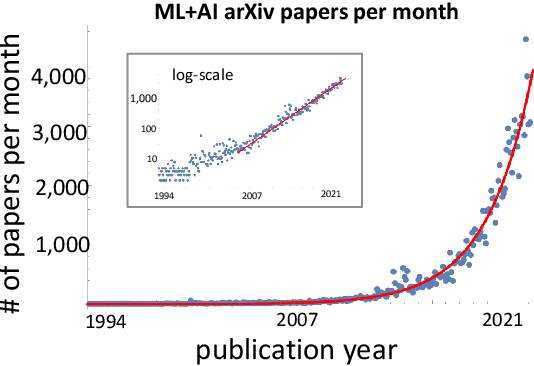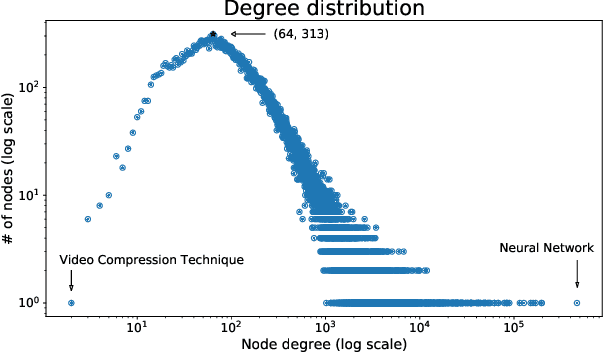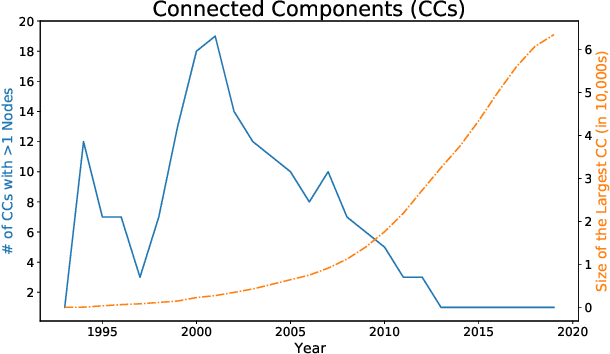Bruno Coutinho
Predicting the Future of AI with AI: High-quality link prediction in an exponentially growing knowledge network
Sep 23, 2022



Abstract:A tool that could suggest new personalized research directions and ideas by taking insights from the scientific literature could significantly accelerate the progress of science. A field that might benefit from such an approach is artificial intelligence (AI) research, where the number of scientific publications has been growing exponentially over the last years, making it challenging for human researchers to keep track of the progress. Here, we use AI techniques to predict the future research directions of AI itself. We develop a new graph-based benchmark based on real-world data -- the Science4Cast benchmark, which aims to predict the future state of an evolving semantic network of AI. For that, we use more than 100,000 research papers and build up a knowledge network with more than 64,000 concept nodes. We then present ten diverse methods to tackle this task, ranging from pure statistical to pure learning methods. Surprisingly, the most powerful methods use a carefully curated set of network features, rather than an end-to-end AI approach. It indicates a great potential that can be unleashed for purely ML approaches without human knowledge. Ultimately, better predictions of new future research directions will be a crucial component of more advanced research suggestion tools.
Network-based link prediction of scientific concepts -- a Science4Cast competition entry
Jan 18, 2022



Abstract:We report on a model built to predict links in a complex network of scientific concepts, in the context of the Science4Cast 2021 competition. We show that the network heavily favours linking nodes of high degree, indicating that new scientific connections are primarily made between popular concepts, which constitutes the main feature of our model. Besides this notion of popularity, we use a measure of similarity between nodes quantified by a normalized count of their common neighbours to improve the model. Finally, we show that the model can be further improved by considering a time-weighted adjacency matrix with both older and newer links having higher impact in the predictions, representing rooted concepts and state of the art research, respectively.
* Keywords: Link Prediction, Complex Networks, Semantic Network
 Add to Chrome
Add to Chrome Add to Firefox
Add to Firefox Add to Edge
Add to Edge